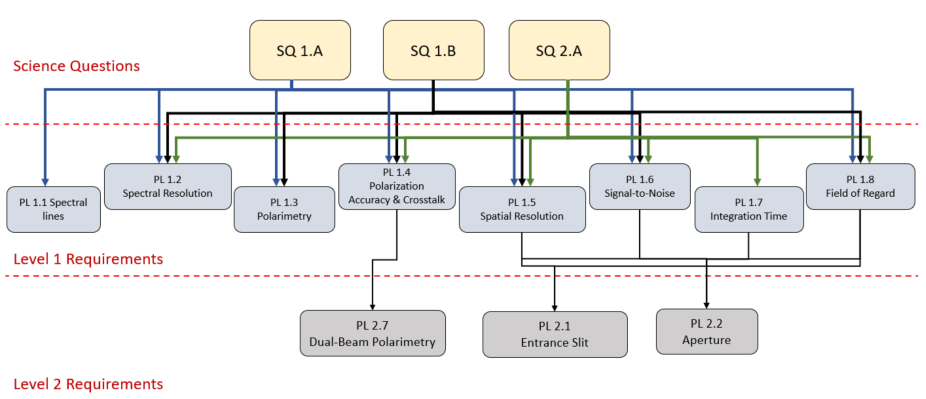
Graph showing the flow-down of requirements from the three science questions (SQ 1.A, SQ 1.B, and SQ 2.A) to Level 1 requirements, and to selected Level 2 requirements.
The Solar Transition Region UltraViolet Explorer (STRUVE) is a proposed miniature satellite (CubeSat) conceived to study the magnetic field in the solar atmosphere currently funded by NASA for a concept study. Magnetism in the solar atmosphere is responsible for "space weather" through explosive processes called flares and coronal mass ejections. Our ability to understand these processes is limited by a lack of observations. STRUVE is designed to observe magnetic field in the solar atmosphere from the deepest observable layers up to the base of the heliosphere that connects the magnetic field of the sun to the earth. To do this, the STRUVE instrument measures polarization in spectral lines in a region of the near-UV that contains the well-known Mg II h and k lines as well as a number of Fe I and Fe II lines that sample many heights in the atmosphere. This paper aims to illustrate the flow down of requirements from the mission science objectives to design requirements while also giving an overview of the design developed from the concept study. The derived requirements from the science objectives are the primary functions STRUVE will need to perform to capture the needed data for the mission. The overview of the mission design will delve into the mission operations and give an overview of the STRUVE instrument and spacecraft. Links between the requirements and mission design are made, pointing out how critical requirements are being met. Throughout the paper, trade studies are presented showing the rationale behind many of the critical design choices made in developing STRUVE for the concept study.